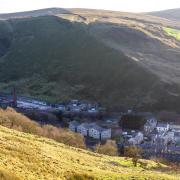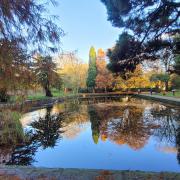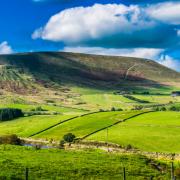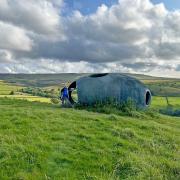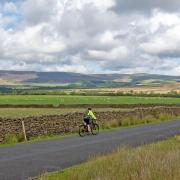Keith Carter finds all three modes of transport but chooses to walk (most of the way at least) on this route from Burscough Bridge

Burscough Bridge sits astride three major arteries on the map, the A59 Preston to Southport road, the railway line linking Manchester with Southport and the Leeds Liverpool Canal known among the narrow-boat fraternity as one of the most scenic canals in England. For walkers too, the canal offers a fine opportunity for indulging their favoured pastime and to walk the whole distance in stages is held to be an achievement to be proud of. Canal walking has one great advantage in that there is hardly any gradient but this is not always desirable, the walking eventually becoming a little monotonous.
Having said that, there is always something to see. If I had the time I’d like to do a survey on canal towpaths, how many people use them and for what purpose; fishing, jogging, cycling, idling, dog walking and, for narrow boat enthusiasts, mooring and tidying up. They are always busy doing something to their spotless craft.
This month’s walk was rather a convalescent one for me having done my ankle in on a badly laid flagstone so I had to watch where I placed my foot. Parking beside the bridge at Burscough Bridge I joined the towpath and headed east, that’s with the water to my right, at first passing a line of moored narrow boats before leaving the built-up area behind, including the derelict flour mill to the right just before Bridge 36b where the canopy over the wharf is still intact.
We soon meet the junction of the main canal and the branch to Rufford, a seven mile spur now used as part of the Ribble Link, connecting the Leeds Liverpool with the Lancaster Canal via Savick Brook and the River Ribble, opened in 2002 with the aid of a £6m grant. Previously the Lancaster Canal was isolated from the main canal system.
I’m always on the alert for birds and butterflies and when I researched this walk I saw somebody coming towards me whom I took for a twitcher judging by the long-lens camera in a shoulder-bag. I paused to ask if he had seen a kingfisher. “No,” he replied, “why do you ask?”
I indicated the camera sticking out of his bag. He glanced at it and remarked “you need more than an umbrella to see a kingfisher.”
Hmm. It had certainly looked like a camera.
Hereabouts World War Two pillboxes are common. It seems they were part of the defences of a secret establishment where tests were carried out to see if rocket fuel could be made from raw sewage. You can probably draw your own conclusion as to the outcome to these experiments. We pass swing bridges and the Ring o’ Bells pub where once upon a time Liverpool’s ‘nightsoil’ was unloaded for use on the local fields. This is market garden country but I noticed one huge field that had an almost perfect greensward laid, good enough for the outfield at Lord’s Cricket Ground. A tractor towing a six-gang mower was at work and a machine for lifting turf which it rolled onto swiss rolls and stacked on pallets. That would suit my lawn nicely.
One tends to forget that once canals were solely an industry, a total working environment, the thousands employed on their maintenance and operation never considering for a moment that they would one day be used entirely for leisure. Working people hardly had any leisure. The Leeds Liverpool’s main purpose was in bringing coal to feed Liverpool’s industries from the Wigan coalfield and an entire community existed on the waterways system. A walk along a canal towpath is a walk through history and the work done by the British Waterways Board to keep us informed is quite admirable really, the interpretative panels giving an insight to the working of the canals in times past.
Arriving at Parbold basin there is further evidence of the early industry in the converted windmill hard by the canal bridge. I turned left and walked down to the station limping a bit after four miles or so from Burscough Bridge. The level crossing gates were down and a train approaching so I decided a lift wouldn’t do any harm. Alighting at Burscough Bridge, I went to pay the guard for my few minutes ride but he waved me away, having no ticket machine with him. I thanked him for my free ride and went looking for a coffee which I found at Infusions on Orrell Lane, a smart establishment with a nice choice of cake but alas no Rocky Road.
Although only an hour and a half long this walk will give a lot of pleasure if you’re short of time and need to stretch your legs. The canal scenery is always changing and there are several places for a pit-stop if you’re so inclined. If catching the train back seems like cheating, you can always walk both ways.
Compass points
Area of walk: Burscough Bridge
Distance: 4 miles
Time to allow: 1 ½-2hrs
Map: OS Explorer 285 Southport and Chorley
Refreshments: Infusions, Orrell Lane, Burscough Bridge.




